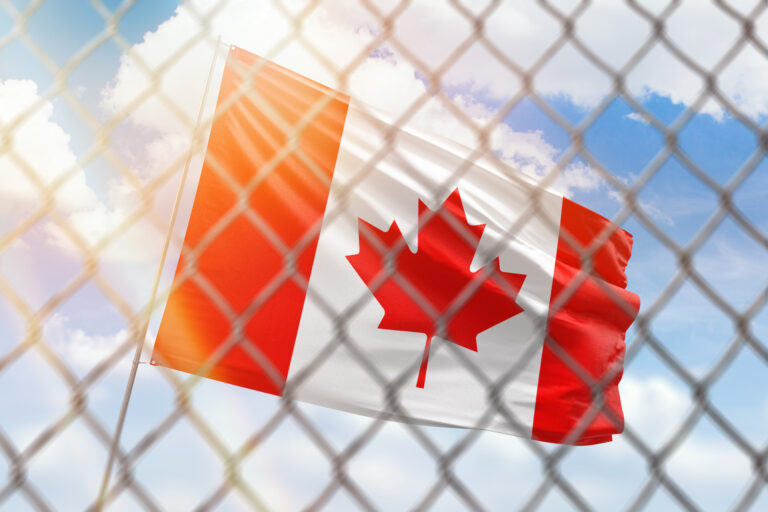Canada saw its second consecutive drop in monthly immigration in July but remains poised to close the year with record-breaking numbers of new arrivals, the latest Immigration, Refugees and Citizenship Canada (IRCC) data reveals.
After starting off the year strong with 50,925 new permanent residents in Canada in January, monthly immigration tapered off, falling by 42 per cent over the next three months to only 29,555 new permanent residents in April.
Canada on track to welcome 521,066 new permanent residents this year
Then, immigration rebounded almost completely to the higher levels seen earlier in the year with 45,995 new permanent residents in May, a spike of 55.6 per cent in the monthly immigration level.
Since then, though, monthly immigration to Canada has again softened.
Read More Canada Immigration News
Here Are Ontario’s 10 Most-In Demand Jobs
Statistics Canada Says It Will Count Temporary Residents Differently
International Students In Canada: Top 10 Most Important Source Countries
In June, Canada welcomed only 42,325 new permanent residents, or eight per cent fewer than during the previous month.
And, in July, only 40,630 new permanent residents came to the country, a drop of four per cent over the previous month.
Despite that slowdown on a monthly basis, Canadian immigration is still up 10.3 per cent for the first seven months of this year compared to the same period in 2022. By the end of July this year, Canada had welcomed 303,955 new permanent residents, 28,480 or 10.3 per cent more than the 275,475 for the comparable period last year.
Are you an employer looking to hire foreign workers in Canada? Immigration.ca can help through its sister company, skilledworker.com. We provide a comprehensive recruitment package to help you identify and hire the best individuals from abroad. Contact us now.
In its 2023-2025 Immigration Levels Plan, Ottawa has set its immigration target for 2023 at 465,000 new permanent residents. The country is also to welcome 485,000 new permanent residents in 2024 and another 500,000 in 2025.
That’s a total of 1.45 million immigrants to Canada over those three years.
If you are a candidate looking for a Canada job, or an employer looking to recruit foreign talent from abroad, immigration.ca can help. Access our expertise through our in-house recruitment enterprise skilledworker.com, “the leader in foreign recruitment”.
The latest figures from the IRCC show the country is on track to greatly exceed not only this year’s targeted level of immigration but also the levels for each of the next two years.
Projecting out from the first seven months of this year, Canada could expect to welcome 521,066 new permanent residents this year if the current trend continues.
Ontario, the country’s most populous province, remained the most popular destination for newcomers with 133,715 of them choosing to immigrate there during the first seven months of this year.
That’s 12.3 per cent, or 14,650 new permanent residents, more than the 11,065 who immigrated to Ontario during the comparable period last year.
Ontario is a magnet for immigration, attracting more than half of all immigrants in Canada
The central Canadian province was the destination of choice for almost 44 per cent of all immigrants to Canada in the first seven months of this year.
Video
Economic programs, including the Ontario Immigrant Nominee Program (OINP), Agri-Food Immigration Pilot (AFIP), Canadian Experience Class (CEC), Caregiver programs, Rural and Northern Immigration Pilot (RNIP), Federal Skilled Trades (FST) and Federal Skilled Worker (FSW) programs, the Start-Up Visa (SUV) and Self-Employed Persons (SEP) programs, and the Temporary Resident to Permanent Resident Pathway accounted for slightly more than half, 50.4 per cent, of all new permanent residents coming to Ontario in the first seven months of this year.
Those programs helped 67,465 new permanent residents arrive in Ontario in the first seven months of this year.
Another 37,005 new permanent residents arrived in Ontario through family sponsorships and 23,300 came to that province through Canada’s refugee and protected persons programs in the first seven months of the year.
The other provinces and territories attracted the following number of new permanent residents each during that period:
- Newfoundland and Labrador – 3,540
- Prince Edward Island – 2,285
- Nova Scotia – 7,345
- New Brunswick – 6,525
- Quebec – 33,550
- Manitoba – 16,760
- Saskatchewan – 16,505
- Alberta – 35,955
- British Columbia – 46,910
- Yukon – 605
- Northwest Territories – 215
- Nunavut – 35
Despite the Quebec government’s repeated insistence that it will cap immigration at 50,000 new permanent residents this year, the francophone province is currently on track to welcome 57,514 new permanent residents based on the trend set in the first seven months of this year.
The Atlantic Canadian province of Newfoundland and Labrador was by far the province with the fastest rate of immigration growth in the first seven months of this year compared to the same period in 2022.
In the first seven months of this year, the Rock, as the province is affectionately called, saw an immigration boom of 109.5 per cent compared to the same period last year, with 3,540 new permanent residents for that period.
But the biggest difference on the Rock has been its Provincial Nominee Program (PNP) which saw growth of 351.6 per cent in its number of new permanent residents in the first seven months of this year, or 1,850 more newcomers to the province during that period than for the comparable one last year.
Are you ready to live and work in Canada? Fill out our free evaluation form to find out if you are eligible.
Become the right candidate with the job you always wanted with our online IELTS and EECP packages at skilledworker.com.
We are accepting international entrepreneurs to join our Start-Up Visa projects in Canada. Read more here.








